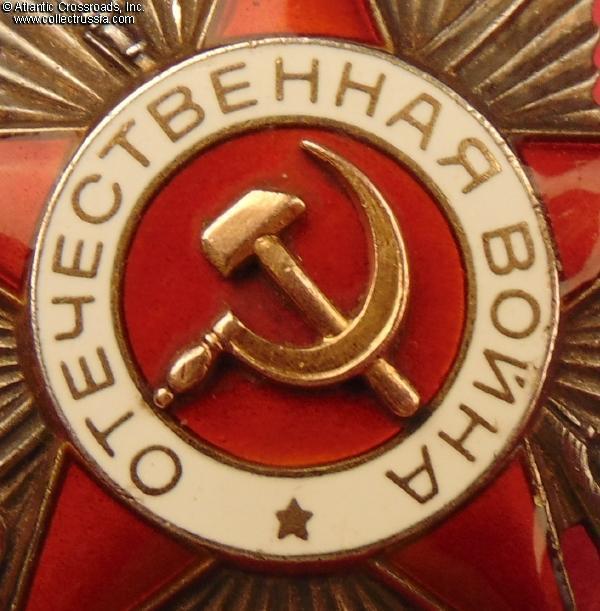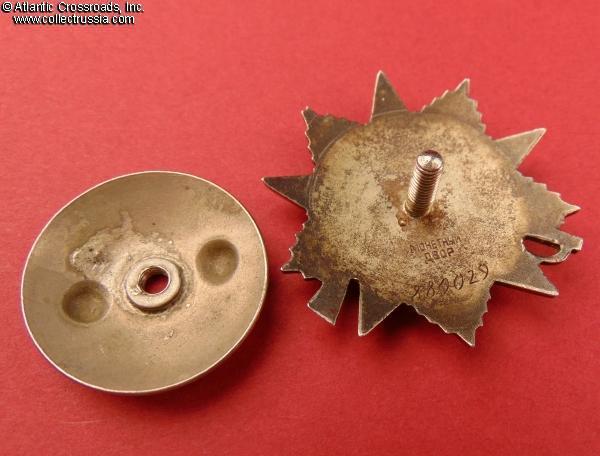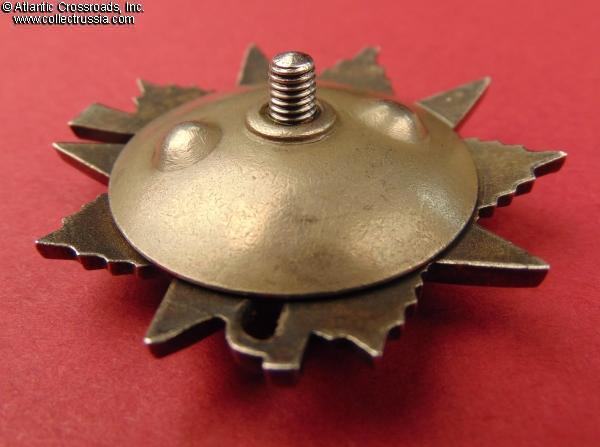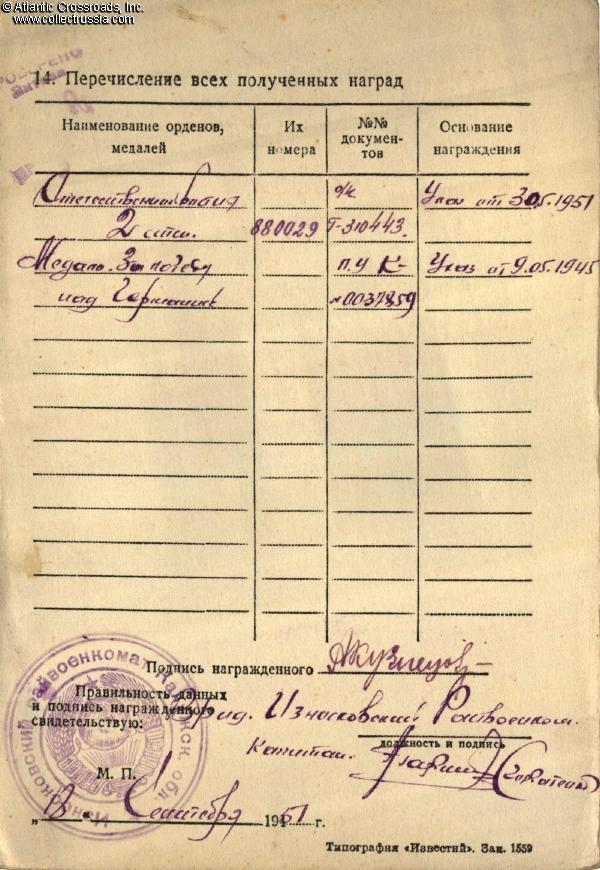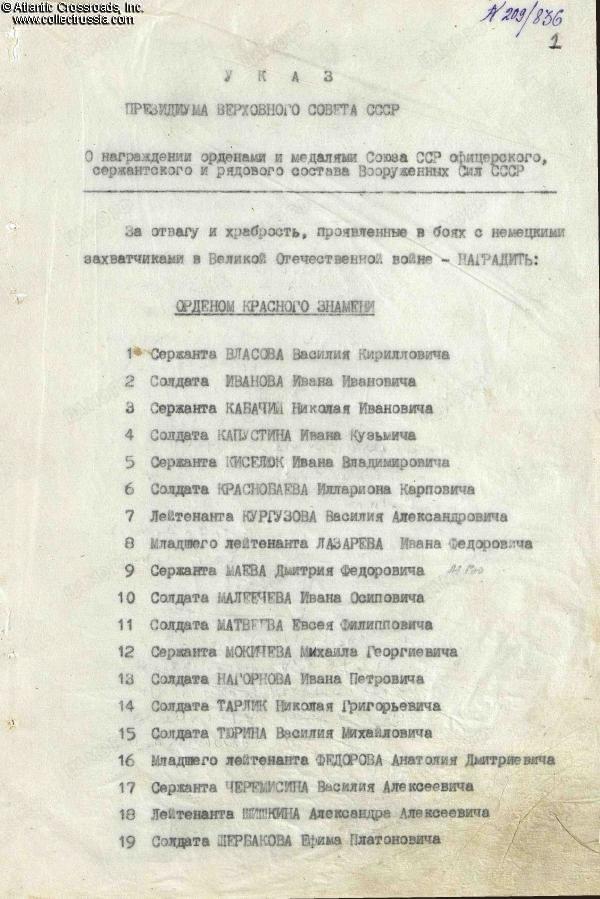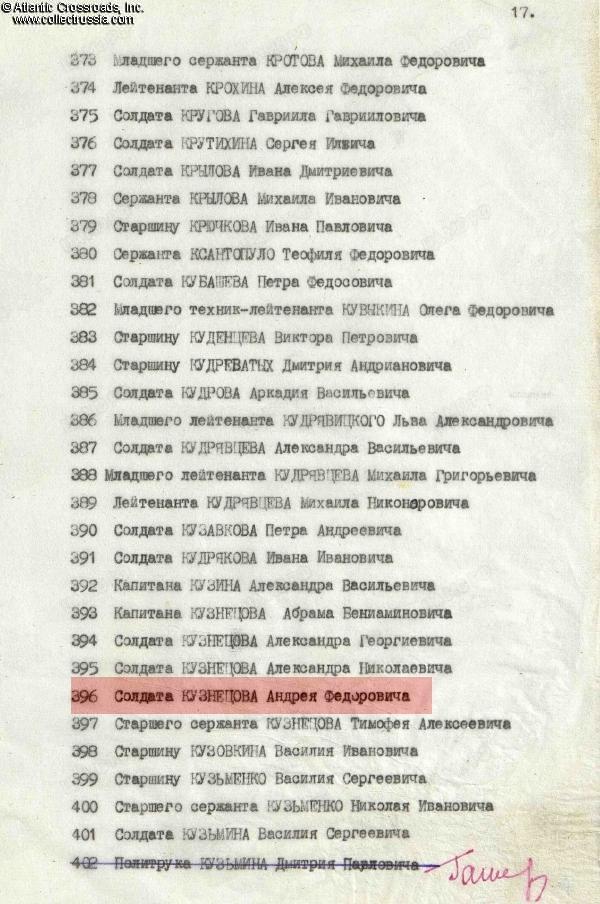Order of the Patriotic War 2nd class, Type 2, "flat reverse" Leningrad Mint variation, #880029, awarded on 30 May 1951 to Private Andrei Kuznetsov, anti-aircraft rangefinder operator in the 554th Separate Anti-Aircraft Artillery Battalion, 324th Rifle Division, 10th Army.
Silver, 14 K gold (hammer & sickle emblem), enamels. Measures 46.1 mm in height, 43.8 mm in width; weighs 27.2 g without the screw plate. Features flat reverse, horizontal mintmark on two lines struck by a single stamp, and serial number without underline. According to Mondvor.narod.ru classification, this piece is Leningrad Mint Variation 5 Sub-variation 1, the first series of the post-war Leningrad Mint "flat backs" produced in the 1950s (its currently known serial number range is 877526 - 919315).
In very fine to excellent condition. The red enamel is practically perfect to the unaided eye, exhibiting beautiful luster and having just a single minuscule flake on the 12 o'clock arm. A couple of other contact marks are only visible under magnification. The white enamel has minute surface flakes in the lower right quadrant. The gold hammer & sickle and silver starburst have only minimal contact marks, no significant wear of any kind. The silver parts show beautiful toning on both sides of the badge. The screw post is of full length, well over 12 mm, and includes an original WW2-era screw plate included.
Andrei Kuznetsov, born 1918 in the village of Shevnivo, Kaluga Region of Russia, fought only briefly in the Patriotic War, from 7 July 1941 to early 1942. He participated in the Battle of Moscow as a rangefinder operator for the 554th Separate Anti-Aircraft Artillery Battalion, 324th Rifle Division, then a part of the 10th Army. This army had already been defeated and reconstituted twice. Now on its third iteration, it was composed primarily of older conscripts with no military experience. Training was limited to two weeks, and there were extreme supply shortages. Nevertheless, the hastily formed force was thrown into the Winter 1941 counteroffensive outside of Moscow, where, on the southern flank, it pushed the Germans back nearly 100 miles along the axis running roughly from Ryazan to Bryansk, through Tula. On 3 January 1942, the 10th Army cut off a German force of some 4,000 troops in the small city of Sukhinichi. Hitler refused the garrison permission to break out; they were to fight to the end. Organizing a relief effort proved futile, and breakout was made impossible by 9 January, as the 10th Army had already pushed ahead nearly 40 miles taking the towns of Zhizdra and Kirov. All that could be provided for the encircled German troops were paltry airdropped supplies and some propagandistic communiques from the Führer. Nevertheless, in the middle of January the German Second Panzer Army launched a successful counterattack recapturing Zhizdra and then pushed northeast. On 24 January, its severely understrength 18th Panzer Division managed to briefly reestablish contact with the beleaguered Nazi garrison in Sukhinichi. On 29 January, Hitler finally heeded the advice of his generals and uncharacteristically permitted the remaining troops in Sukhinichi to retreat, whereupon the town was liberated by the elements of the 10th Army, including the 324th Rifle Division.
During the siege, Kuznetsov was ordered to prevent German aircraft from aiding the pocket. While repelling an enemy sortie, he was severely wounded by bomb fragments. His face was left heavily disfigured, with loss of his nose and a portion of his upper jaw. The present Order of the Patriotic War was awarded in 1951 in recognition of that sacrifice.
Research Materials: photocopy of the award record card, award commendation, and relevant pages of the award decree.
Item# 40449
$270.00 Add to cart

